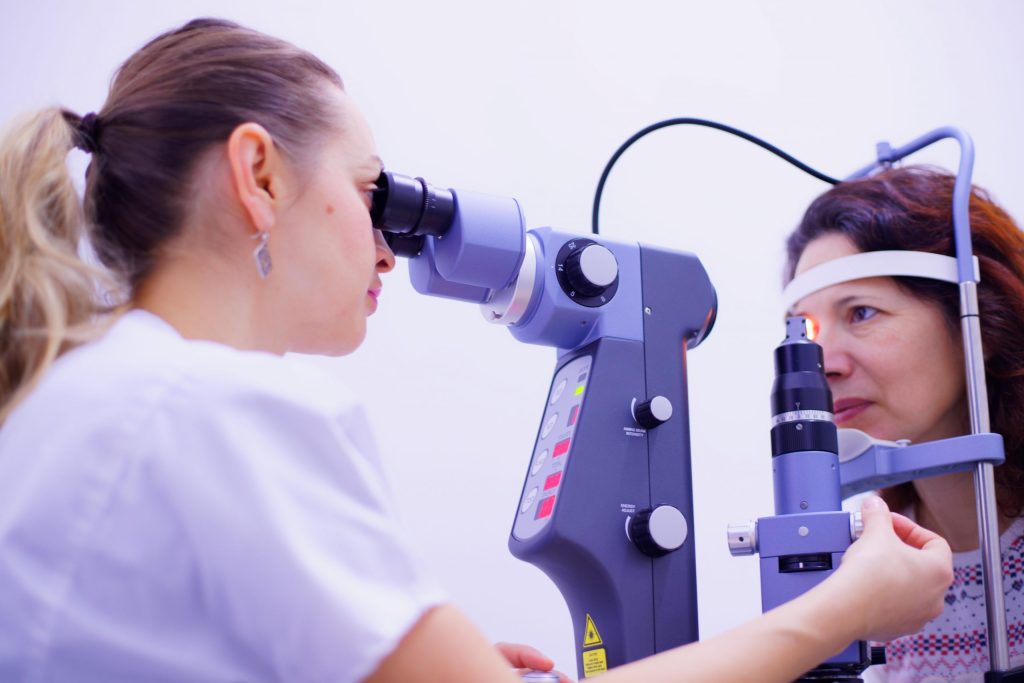Seniors Over the Age of 55 Face Greater Risk of Cataracts
If you or someone you love is experiencing vision problems and is over the age of 55, cataracts may be the culprit. Although cataracts can occur in younger patients due to a genetic problem or infection, they are far more common in seniors age 55 and older. Most cataracts develop gradually, and you may not notice the change in vision right away. Over time, they can cause severe vision loss and may require surgery. While there is no treatment apart from surgery that will cure a cataract, there are plenty of options for seniors who want to maintain their vision and continue to remain active in their day-to-day activities.
What Causes Cataracts?
Cataracts are cloudy areas on the lens of the eye. They develop slowly and usually increase in size over time, eventually causing severe vision loss. Cataracts can be caused by a number of different factors, including:
- Changes that naturally occur in the lens of the eye as people age
- Excessive exposure to ultraviolet radiation
- Diabetes
- Certain types of drugs
- Lack of good nutrition
- Smoking
- Excessive alcohol consumption
There have been no conclusive studies to demonstrate whether or not cataracts can be prevented, but some evidence indicates that you may be able to reduce your risk by wearing UV protective sunglasses, improving your diet to include more Vitamin C, Vitamin E, zinc, and lutein (found in leafy green vegetables), and choosing to stop smoking.
How Do You Know If You Have Cataracts?
If you are experiencing impaired vision or if you notice a cloudy area in one or both eyes, you should see an eye doctor for an examination. He or she will perform visual acuity tests, evaluate the lens and retina, and test your sensitivity to light. Symptoms of cataracts include:
- Blurred vision
- Inhibited ability to discern color
- Difficulty seeing at night
- Increased sensitivity to light or glares
- Cloudiness in the lens of the eye
Cataracts may be located in the center of the lens (nuclear cataract), in the layer of the lens that surrounds the nucleus (cortical cataract), or in the outer, back layer of the lens (posterior capsular cataract). Cloudiness may appear yellow or brown and may affect the entire lens or may have a wedge-shaped or spoke-like appearance, depending on the type of cataract you have.
Is Surgery Necessary?
Once cataracts have developed, there is no way to cure or treat them with medication. However, not all cataracts require surgery right away. Preliminary treatments may include a new eyeglasses prescription that includes an anti-glare coating. Your eye doctor will want to schedule regular checkups to monitor the progression of the cataract. Surgery is usually a last resort that will be recommended only when the cataracts prevent a person from performing normal daily activities. There are two types of surgery used to treat cataracts:
- Small incision surgery–In this surgery, a small incision is made in the cornea, and the surgeon then uses a small probe to break up and remove the lens.
- Extracapsular surgery–In this surgery, the lens is removed all in one piece.
Once the lens has been removed, it will be replaced be a clear plastic lens. While surgery may sound intimidating, most patients recover exceptionally well and regain most, if not all, of their vision. There is no special care required for the new lens, and patients may find that they see better than they have in years. An in-home caregiver can help patients perform daily tasks while they recover, and can also assist with healthy meal options that will improve eye health as well as the overall health of the patient.

